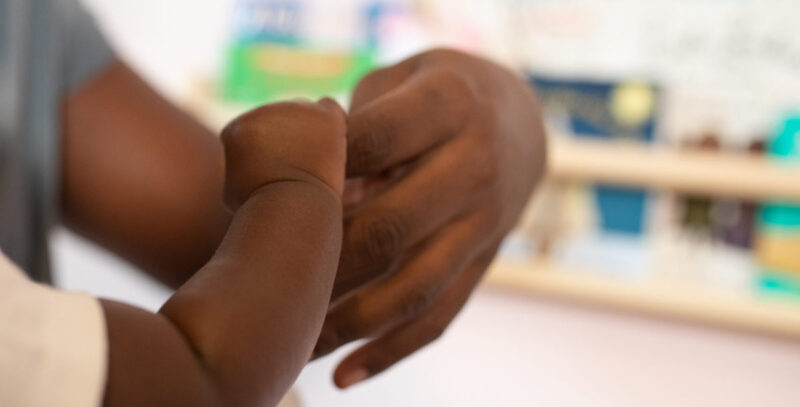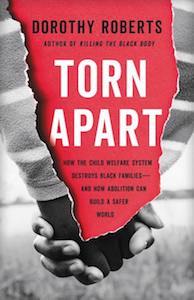
Given the vague definitions of child maltreatment and the discretion given to people who report, investigate, and respond to abuse and neglect allegations, it should come as no surprise that studies have discovered bias against Black families at every stage of decision making. Anti-Black discrimination is well documented in every other public system and private institution.
Black Americans receive inferior medical care even when they have health insurance, are denied loans and steered into risky financial instruments, get turned away from employment opportunities, and are targeted for harassment and arrest by police officers. The professionals making subjective child welfare determinations are also influenced by negative attitudes about Black families. Racial bias isn’t what makes the child welfare system a racist institution, but it facilitates the system’s targeting of Black communities for intervention.
Studies confirm that caseworkers make racially biased decisions about their investigations of reported abuse and neglect. With Black children five to six times more likely to be involved in Minnesota’s child welfare system than their share of the child population, the state has one of the nation’s highest racial disproportionality rates. In fact, in April 2018 Black parents filed a federal civil rights lawsuit accusing the state of racial discrimination in its enforcement of the child protection laws.
The Minnesota African American Family Preservation Act, which seeks to “prevent any unnecessary removal of African American children,” has been pending in the state legislature since 2019. In an especially intriguing 2012 study, researchers used an experimental method to test the “racialized perceptions” of hundreds of child welfare workers across Minnesota. The experiment consisted of sending caseworkers in eighty-two counties an online exercise within a regularly scheduled training session. The exercise involved vignettes describing a messy home environment, accompanied with photos of disheveled bedrooms that randomly varied whether a baby sitting by itself on a bed was Black or white, or whether there was no baby in the photo. The researchers obtained photos from actual case files and digitally superimposed either a white baby or a Black baby.
Numerous studies establish that racist beliefs about Black families subject them to greater suspicion and intervention than white families.The experiment was based on prior interviews with child welfare workers to determine what they considered to constitute neglect. The interviews uncovered a concept the researchers called the “messy house” phenomenon. The respondents uniformly indicated that they could visualize neglect in a “filthy, messy, disorderly living environment,” one they “know when they see it.” The problem was that the caseworkers “saw” neglect through a racist lens. When the researchers tabulated the results of the online exercise, they discovered that the caseworkers were significantly more likely to agree that the vignette accompanied by a photo with a Black baby depicted a situation that met the state’s definition of—and their subjective test for—neglect.
The Minnesota study also calculated that caseworkers’ racialized perceptions of neglect were statistically related to the disproportionate rates of substantiating child neglect allegations against Black parents. These findings reinforced what researchers had discovered in two prior studies, published in 2008 and 2011, using statewide data from Texas. The studies found that, even after controlling for poverty and other risk factors, Black children were more likely than white children to have substantiated cases and to be removed from their homes. Similar to the analyses revealing doctors’ lower threshold for evaluating and reporting Black children for abusive head trauma, the Texas studies showed that it takes less risk of harm for caseworkers to tear Black children from their families.
A survey of child welfare case files in Michigan discovered that CPS workers frequently described Black parents as “hostile,” “aggressive,” “loud,” and “cognitively delayed” and assumed they had drug abuse problems without any justification for these portrayals. The report summed up the racist attitudes that grease the foster care machine: “The belief that African American children are better off away from their families and communities was seen in explicit statements by key policy makers and service providers. It was also reflected in choices made by DHS.” Taken together, numerous studies establish that racist beliefs about Black families subject them to greater suspicion and intervention than white families.
The biased definitions of abuse and neglect and the racist ways child welfare professionals apply them should frame our interpretation of the child maltreatment statistics. By the time they reach eighteen years of age, one in eight US children will have a state-confirmed maltreatment report. The figure for Black children—one in five—is the highest for any racial group. “Black children are about as likely to have a confirmed report of maltreatment during childhood as they are to complete college,” noted the analysts who calculated these statistics. That comparison takes on a different meaning when we take into account how racism shapes the entire process that produces confirmed maltreatment reports.
When my youngest child was in kindergarten at a public elementary school in Evanston, Illinois, my first meeting with his teacher was tense. She immediately told me in a stern voice that my son had been absent for too many school days without a medical excuse. She was especially upset that he hadn’t participated in the class exercise commemorating Thanksgiving. “All the other children made Indian headbands out of paper and feathers,” she chastised me. When his classmates were engaged in this questionable activity, my son and I were traveling in England, where I had been invited to give a talk at University of Kent.
My daughter was in London at the time, where she spent her college junior year, and this was a fortuitous chance for her little brother to see her and taste life in a foreign country. Before I could respond, the teacher gave me a strict warning: “If your son continues to miss school, I’m going to call a truancy officer to visit your home.” The teacher’s condescending approach convinced me that she viewed me as an irresponsible Black mother who didn’t appreciate the value of education and needed her intervention to raise my son properly.
Several months later, the teacher assigned the students to make little books out of construction paper with pictures of their favorite activities. My son crafted a mini travelogue with photos of our trips when he had accompanied me to foreign universities for lectures and conferences. When I had a second meeting with the teacher, her attitude had changed completely. She was delighted that my son was so experienced in international travel and pleased with his project displaying these adventures. There was no mention of calling the truancy officer. I felt sure she had looked up my background and discovered I was a university professor—I had transformed into an acceptable Black mother who didn’t need to be told how to parent her child.
My profession had protected me from a report for truancy that easily could have escalated to a CPS investigation and my entanglement in the family-policing system. My profession also gave my son the possibility of traveling the globe with me. What if he were missing school because we had been evicted or I was suffering from severe depression and couldn’t afford appropriate treatment? The teacher’s call triggering CPS involvement would not have provided the resources we needed. Indeed, putting my son in foster care would probably have disrupted his education even more.
The inequities in who is targeted by family policing do not mean that privileged families should be policed more. For one thing, the children from elite white homes have no place in a damaging system designed to regulate disfranchised families. Their parents are too powerful to be subjected to intrusive investigations, traumatic child taking, and disastrous foster care. Rather, all families should have the resources wealthy families have to support their caregiving and to address their problems. Most families are harmed to varying degrees by a child welfare system that relies on market-supplied services for the socially privileged and terror for the socially disadvantaged.
_____________________________________________

Excerpted from Torn Apart: How the Child Welfare System Destroys Black Families—and How Abolition Can Build a Safer World by Dorothy Roberts. Copyright © 2022. Available from Basic Books, an imprint of Hachette Book Group, Inc.